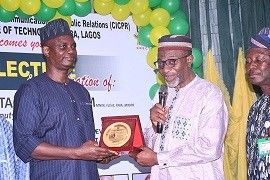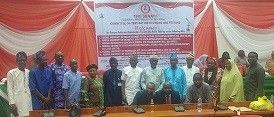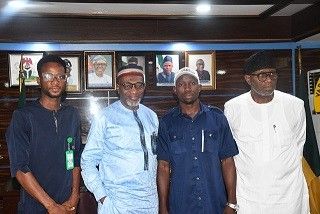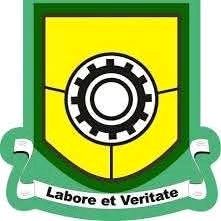EDUCATION
The Differences between the Department of Quantity Surveying vs. Surveying and Geo-Informatics, and what they Do
The Differences between the Department of Quantity Surveying vs. Surveying and Geo-Informatics, and what they Do

When it comes to construction and civil engineering, the terms “Quantity Surveying” and “Surveying and Geo-Informatics” often arise, but they refer to distinct fields with different focuses and applications.
In this article, we will clarify the differences between these two disciplines, helping polytechnic students and professionals make informed decisions about their careers or project needs.
Quantity Surveying: Managing Costs and Contracts
Quantity Surveying is primarily concerned with the financial and contractual aspects of construction projects. Quantity surveyors (QS) play a crucial role in managing the costs, ensuring that projects stay within budget while maintaining quality and compliance. Their responsibilities include:
1. Cost Estimation.
QSs provide detailed cost estimates for construction projects based on plans and specifications. They evaluate material and labor costs to predict the total expenditure.
2. Contract Management.
They handle contracts between clients and contractors, ensuring all terms are met and managing any disputes that may arise.
3. Budget Control.
Throughout the project lifecycle, quantity surveyors monitor and control costs, advising on financial decisions and implementing cost-saving measures where possible.
4. Financial Reporting.
QSs prepare reports and financial statements to track project expenditures and ensure transparency and accountability.
Quantity surveying is essential for ensuring that construction projects are financially viable and that resources are used efficiently. This course requires a strong understanding of construction processes, cost management, and legal aspects of contracting.
Surveying and Geo-Informatics: Mapping and Analyzing Land
Surveying and Geo-Informatics involves a broader range of activities related to land measurement, mapping, and data analysis. This field combines traditional surveying techniques with advanced technologies to collect, analyze, and manage spatial data. Key areas include:
1. Land Surveying.
This involves measuring and mapping land surfaces to create accurate representations of geographical features. Land surveyors use tools like GPS and total stations to gather data for various applications, including construction, land development, and environmental monitoring.
2. Geo-Informatics.
This field integrates Geographic Information Systems (GIS) and remote sensing technologies to analyze and interpret spatial data. Geo-informatics professionals create detailed maps, analyze spatial patterns, and manage geographic data for diverse applications such as urban planning, environmental management, and transportation.
3 Data Analysis and Management.
Surveying and geo-informatics experts handle large datasets, applying statistical and analytical methods to extract meaningful insights and support decision-making processes.
4. Technological Integration.
The field leverages cutting-edge technologies, such as drones, satellite imagery, and 3D modeling, to enhance data collection and analysis capabilities.
Surveying and geo-informatics are important for understanding and managing land use, natural resources, and infrastructure. This discipline requires expertise in spatial data collection, technological tools, and data interpretation.
Key Differences between Quantity surveying and surveying and Geo
1. Focus.
Quantity surveying focuses on financial and contractual management of construction projects, while surveying and geo-informatics emphasize land measurement, mapping, and spatial data analysis.
2. Applications.
Quantity surveying is concerned with cost control and contract management, whereas surveying and geo-informatics support land development, environmental monitoring, and spatial analysis.
3. Skills and Tools.
Quantity surveyors use cost estimation tools and contract management software, while surveying and geo-informatics professionals use GIS, remote sensing technologies, and spatial analysis tools.
ALSO READ: 6 Top Places for Agricultural Technology Students to Undertake SIWES/Industrial Training (I.T)
In Summary, both quantity surveying and surveying and geo-informatics play vital roles in the construction and civil engineering sectors. Understanding their distinct functions and applications can help Nigerian students choose the right career path or determine the most suitable professional for their project needs.
Discover more from 9jaPolyTv
Subscribe to get the latest posts sent to your email.

 Admission9 hours ago
Admission9 hours agoOke-Ogun Polytechnic, Saki Releases 2025/2026 ND & HND Full-Time and ND Part-Time Admission Forms

 EDUCATION7 hours ago
EDUCATION7 hours agoApplications Now Open for NNPC/SNEPCo National University Scholarship 2025 (₦250,000 Annual Award)

 Admission10 hours ago
Admission10 hours agoFederal Polytechnic Ilaro Announces 2025/2026 Admission Screening for ND, HND, Part‑Time, Weekend & ODFEL Programmes

 EDUCATION9 hours ago
EDUCATION9 hours agoYABATECH Rector Lists 20 Reasons for Renaming College as Yaba Technical and Vocational University

 EDUCATION7 hours ago
EDUCATION7 hours agoMTN Cloud Accelerator Program 2025: ₦100 Million in Grants for African Startups

 EDUCATION10 hours ago
EDUCATION10 hours agoYABATECH Announces 2025/2026 Admission Into Part-Time HND Programmes

 EDUCATION9 hours ago
EDUCATION9 hours agoNAPS Backs YABATECH’s Upgrade to TVET University, Drops Opposition After Clarification from Rector

 EDUCATION9 hours ago
EDUCATION9 hours agoTechnical Education, A Strong National Development Instrument – Ilaro Poly Rector






















